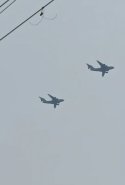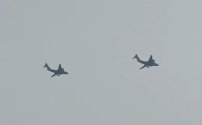If that's the case then China will have more Strategic airlift than the US in a few very short years, if Scramble.nl is to be believed there are currently 102 Y-20(With quite possibly even more currently awaiting delivery parked at the factory) of all variants active including aerial refueling variants. If production is truly 50-70 airframes per year then the number of Y-20s will easily surpass the 222 C-17 that the US has active. This could mean quite a significant boost for PLA strategic deployment.
Firstly, I should note that I didn't say that 50-70 is the/will become the actual production rate for the Y-20 family. That figure is only my own guesstimate based on historical references + China's present-day capability extrapolations.
Besides, the US procured the C-17 to be used as strategic airlifters only, as they don't really need the C-17 to act as refueling tankers (a role which hundreds of KC-135s and KC-46s are readily available for) and AEW&C aircrafts (a role which the E-3s are, and the E-7s will soon be available for).
Meanwhile, as China does not have domestically-produced airliners that is readily available and sanction-proof to be converted/made into refueling tankers and (large) AEW&C aircrafts for the time being - The Y-20 is the only viable option.
TL; DR - The Y-20 and C-17 cannot be compared as it is.
Speaking of which is there any news on the next generation tactical transport? Since it seems that the Y-9 still lags behind C-130s in both range/payload and numbers.
Not long ago, one of our old friends mentioned that the Y-30 (as a successor to the Y-8/9 family) is in the works and could be flying soon - But I'd prefer to take that "soon" as "at least a couple years".
Also, I don't see how that bolded phrase is actually the case.
Last edited:











